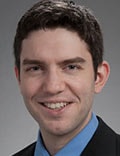Third-Year Dos and Don’ts List: Your First Rounds
When you tell someone you’re in medical school, they probably envision the third year. Bedside learning is fundamental to developing core skills like physical examination and communication, as well as empathy.
For those about to start doing rounds, medical school is certainly on the extreme end of life experiences and can unsettle even the steadiest among us.

“Rounds, and much of medical school, can often feel like performance art. I wish that I had realized much earlier in my career how climbing an academic ladder is not its own end,” said Jeff Redinger, MD, now an assistant professor in the Division of General Internal Medicine at the University of Washington School of Medicine in Seattle.
“Stay mindful of your own career goals because all of this training is ultimately about benefiting you and your present and future patients,” he said.
Here are some straight-from-the-wards tips on what to definitely do — and what to avoid — when you start rounding.
Go Beyond the Chart for Pre-Round Prep
Start by allocating 1 hour of prep time per patient for pre-round preparation. Yes, that’s more time than you think you need.
“After your first few days, you’ll get a feel for how much time you need to feel prepared for rounds,” Redinger said.
Don’t get buried in the chart, either. Make sure you gather information from nurses, caregivers, and the patients themselves about the past 24 hours, especially if there are any new concerns.

“Students may focus too much on the data, like vitals and labs, at the expense of checking in with the people,” cautioned Christa Zehle, MD, senior associate dean for Medical Education and professor of pediatrics at the University of Vermont’s Larner College of Medicine, Burlington, Vermont.
You’ll also likely have some early morning empathy practice during pre-round work.
“Though it’s often hard, don’t shy away from waking up your patient. It’s much harder — and worse for patient care — to find out about that new, severe symptom when rounding with the team later in the morning,” Redinger said.
Phrases for the Tip of Your Tongue
The first one to have at the ready is “I don’t know.”
It’s expected that you will encounter situations where you don’t have certain information or simply do not know, and that’s okay, Zehle said.
“Medical students often want to demonstrate perfection from the very beginning, which can interfere with the learning process,” she added.
Another handy phrase will also help signal to a patient that the visit is wrapping up.
“Practice using the exact words ‘What questions do you have?’ at the end of the encounter,” Redinger said. “This acts as a good bookend phrase so that the patient knows that rounds are over and also has a better tone compared with ‘Any questions?’ or ‘Do you have any questions?’”
And one of the greatest ways to become a better communicator is to say nothing at all. Silence will be particularly powerful when you are on the cusp of mastering many of the key facets of the third year.
“Here’s the biggest challenge: You’re going to spend a lot of time practicing how to pre-round, round, develop a good assessment, and just how to navigate the hospital, but then you’re expected to figure out how to translate all of the medical jargon into manageable terms for your patients,” Redinger said.
You might say to yourself, “How in the world am I supposed to explain what the BUN [blood urea nitrogen] to creatinine ratio is to my patient, and do I even need to?”
That’s the kind of moment when the answer is observation.
“Observe your residents counseling patients as much as possible and take note of specific terms used that might be useful in the future,” Redinger said.
The Rest of the Day
Talk with the nurses, caregivers, and patients.
“Nurses are an excellent resource for how your patient is doing,” Zehle said. “They can let you know if they have any questions or concerns and if they have all the orders needed to provide the patient with high-quality care.”
Take the time to learn something about your patient, like who their supports are, what they enjoy, and what their hobbies are, Zehle said.
An afternoon visit with your patient will help you, the patient, and the entire team.
“Patients benefit when you update them on the progress of the day at least once in the afternoon,” Redinger said. “This kind of proactive communication is frequently noticed by your team members and also makes you the best source of updated information about how a patient has responded to treatment.”
You may also consider that time with your patient as an additional guard against an erosion of empathy.
The paper “The Devil is in the Third Year” showed that a group of medical students’ scores on a physician empathy rating scale didn’t change in the first 2 years but declined significantly at the end of the third year. The reduction persisted until graduation and was observed across specialties.
“It is ironic that the erosion of empathy occurs during a time when the curriculum is shifting toward patient-care activities; this is when empathy is most essential,” the authors wrote.
How You Know You’ve Got It Down
The moment that you know you’ve hit your stride with rounds will come right after you do something wrong.
“The biggest milestone is realizing that you’re going to be wrong a lot during rounds,” Redinger said. “Don’t let it get to you, because this has happened to generations and generations of medical students before you. Though we attendees may not admit to this, it also happens to us.”
During rounds, skip the side conversations and dedicate yourself to learning and practicing, and also closing the loop and putting your new learning into practice.
“When you get something wrong, just listen to any corrections by your team and then apply this teaching the next time you’re on rounds. This is simultaneously good learning and a demonstration to your team that you can efficiently integrate feedback into clinical care, which is one of the most important attributes of a good physician,” said Redinger, who conducts weekly physical examination rounds with his hospital’s chief residents to demonstrate bedside teaching.
Your opportunities to receive bedside teaching are on the decline — its incidence during attending rounds has declined from 75% during the 1960s to around 16% currently, although that drop is partly due to a rise in technology. That means take advantage of all that the third year has to offer.
“Be fully engaged in the experience,” said Zehle. “Practicing medicine and caring for patients is a privilege. You will learn so much from your patients and other healthcare professionals throughout your career.”


 Admin_Adham
Admin_Adham


